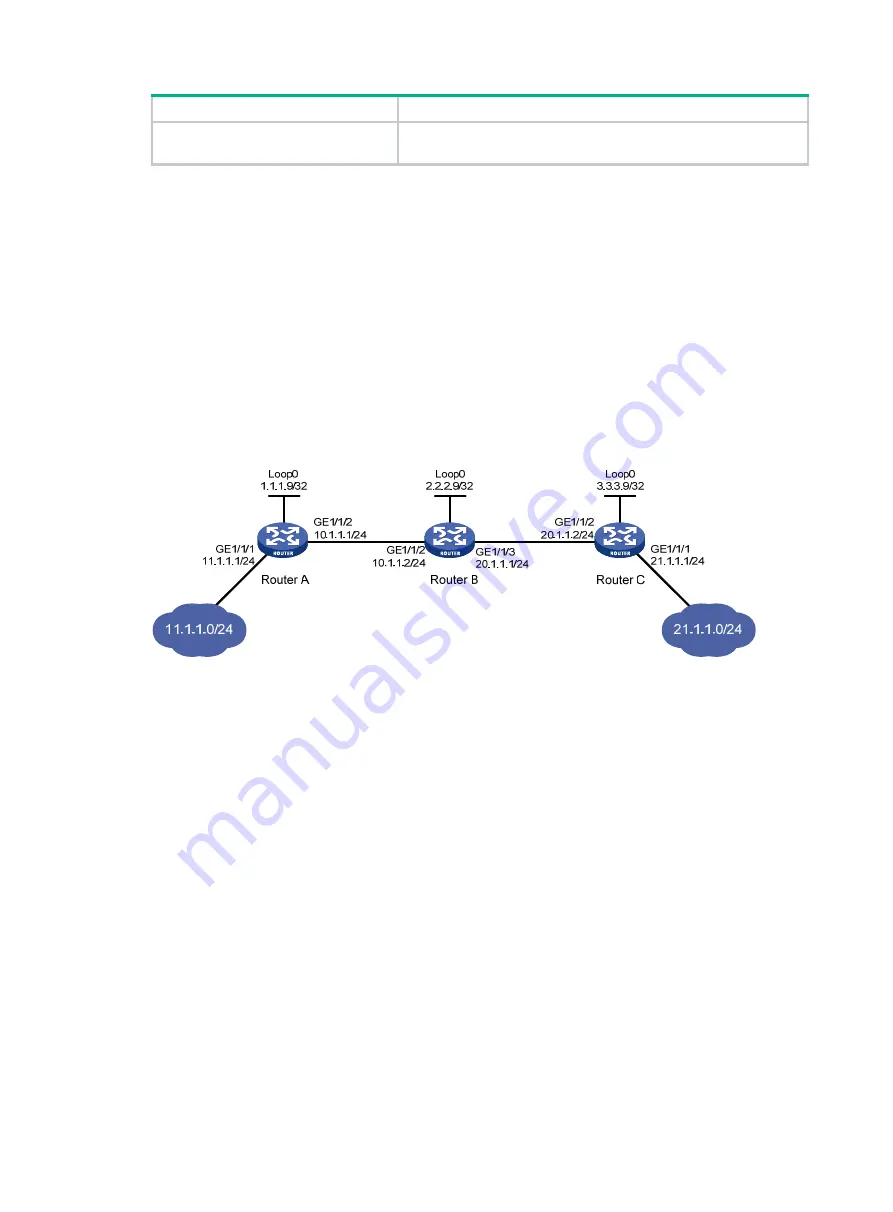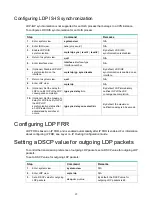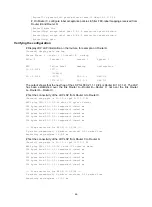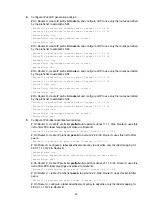
39
Task Command
Display LDP summary information.
display mpls ldp summary
[
all
|
vpn-instance
vpn-instance-name
]
IPv4 LDP configuration examples
LDP LSP configuration example
Network requirements
Router A, Router B, and Router C all support MPLS.
Configure LDP to establish LSPs between Router A and Router C, so subnets 11.1.1.0/24 and
21.1.1.0/24 can reach each other over MPLS.
Configure LDP to establish LSPs only for destinations 1.1.1.9/32, 2.2.2.9/32, 3.3.3.9/32, 11.1.1.0/24,
and 21.1.1.0/24 on Router A, Router B, and Router C.
Figure 18 Network diagram
Requirements analysis
•
To ensure that the LSRs establish IPv4 LSPs automatically, enable IPv4 LDP on each LSR.
•
To establish IPv4 LDP LSPs, configure an IPv4 routing protocol to ensure IP connectivity
between the LSRs. This example uses OSPF.
•
To control the number of IPv4 LSPs, configure an IPv4 LSP generation policy on each LSR.
Configuration procedure
1.
Configure IP addresses and masks for interfaces, including the loopback interfaces, as shown
in
. (Details not shown.)
2.
Configure OSPF on each router to ensure IP connectivity between them:
# Configure Router A.
<RouterA> system-view
[RouterA] ospf
[RouterA-ospf-1] area 0
[RouterA-ospf-1-area-0.0.0.0] network 1.1.1.9 0.0.0.0
[RouterA-ospf-1-area-0.0.0.0] network 10.1.1.0 0.0.0.255
[RouterA-ospf-1-area-0.0.0.0] network 11.1.1.0 0.0.0.255
[RouterA-ospf-1-area-0.0.0.0] quit
[RouterA-ospf-1] quit
# Configure Router B.
















































